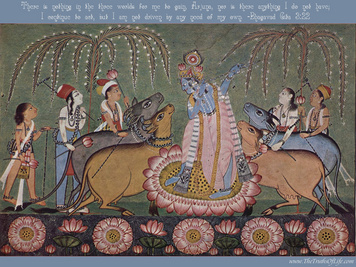प्राचीन भारत Ancient India
Aryan Civilization
Entering Indiia...

Remnants of Harappa
When the Aryans arrived, much of Mohenjo Daro and Harappa were already deterioted. Scientists have also found that there were signs of overcrowding and trashy streets that indicated the civilization had long been gone when the Aryans came. Much of the ancient civilization of Harappa and Mohenjo Daro were almost gone...unfortunately.
The Aryans Take Over

The Aryans were Indo-Europeans from Siberia and Central Asia; they came to the West to Europe and some Aryans came to the plains of India in the North, between 1500 and 1000 B.C.E. After that, the Aryans left the Kush River area and went to the Indus Valley near the River and the Ganges. The Aryans eventually moved south towards the Deccan Plateau, gaining control over almost all of India.
Achievements

An Ancient Plow
As the Aryans settled in India, they began to come up with a series of developments that brought out the other side of Ancient India. Iron was introduced by the Hittites in the Middle East in 1500 B.C.E.; and the Aryans used this discovery, in the creation of the iron plow which allowed the jungles prevalent in India to be cleared away faster and made navigation easy. New irrigation methods allowed much prosperity to thrive in the Ganges Valley and in South India. The first writing system was also established by the Aryans. The language became known as Sanskrit; the language was based on Aramaic. The development of the writing system meant that the oral tradition that was common in Ancient India was translated into Sanskrit and written as the Vedas.
Bringing Religions to India

One of the most important contributions that the Aryans made is the religions that they brought when conquering India. There is a rich influence of Greek and Roman polytheistic beliefs in the culture and beliefs that the Aryans brought to India; the Aryans were the ones who introduced the Indians of the importance of natural earth and nature. They started the personifications of the sun, moon, and earth into actual gods.
The Aryans, since they were nomads, did not build temples due to the fact that they were moving around a lot of times. They replaced the temples by sacrificing animals and puring items like milk or ghee out for the gods that they worshiped. Many Aryan religious practices were later used by Indian rulers after the Aryan civilization.
The Aryans, since they were nomads, did not build temples due to the fact that they were moving around a lot of times. They replaced the temples by sacrificing animals and puring items like milk or ghee out for the gods that they worshiped. Many Aryan religious practices were later used by Indian rulers after the Aryan civilization.
Political Structure

The Age of the Maharajah
The Aryan tribes had a political structure that is similar to the governments that are present today in the Americas and even Europe. The Aryans were ruled by one chief leader called a rajah, and the rajah was helped by a council of elders. The council of elders was composed of the governing people of the tribe; they had to prove to the tribe that they were worthy of helping the chief. The chief, always a man, had to be part of the class called the kshatriya (known as the the warrior class); the class of warriors was a group of men that were trusted to protect the tribe from rival groups. This was very important since much of the civilizations had alliances that rapidly changed from day to day. The rajah title eventually evolved into the title "maharajah," and the Aryans were also sure to emphasize the role of gods in their politics. They focused their attention on dharma, which was a code of laws that told the people of India their status in society (caste system) and how to behave.
The Greeks Invade

As new empires rose up in the west, many of the empires fought against each other and wanted to take over different civilizations; one of theses empires was that of the Greeks. Greece had a period of victory under Alexander the Great during the 4th century B.C.E. Alexander had already won against the Persians(ruled by Cyrus and Darius), and he had heard about the riches of India. He launched an attack on India through the northwestern plains and eventually spread to the east. In the north, he met up with the Indian king, King Porus, where they fought one of the most important wars of the time.
The Battle at Paurava

King Porus the ruler of Paurava, which is today located in Punjab as shown by the map. The most remembered fact of the battle at the Hydaspes River was that King Porus fought Alexander's army with elephants. The elephants did scare Alexander's army, but the climate was further endangering Porus's army. Monsoons and rugged terrain affected the Indian army more than the Greek army because of the lack of modern weapons and resources.
Alexander won the battle in the end; he was defeated at Magadha though when he was stopped by his own troops.
Alexander won the battle in the end; he was defeated at Magadha though when he was stopped by his own troops.
http://www.youtube.com/watch?v=-nVCtzHI5VY&feature=related
Check this video out on YouTube.com..... fast-forward to 7 min
Images from:
egardenhub.com
mapsofindia.com
Information from:
About.com
World History by William Duiker and Jackson Spielvogel
Video from:
Youtube.com(Arash 2650)
http://youtu.be/-nVCtzHI5VY
Alexander the Great(movie clip) by Oliver Stone
egardenhub.com
mapsofindia.com
Information from:
About.com
World History by William Duiker and Jackson Spielvogel
Video from:
Youtube.com(Arash 2650)
http://youtu.be/-nVCtzHI5VY
Alexander the Great(movie clip) by Oliver Stone
